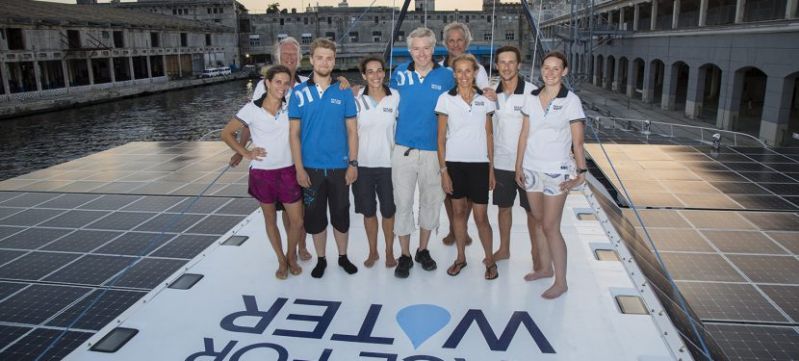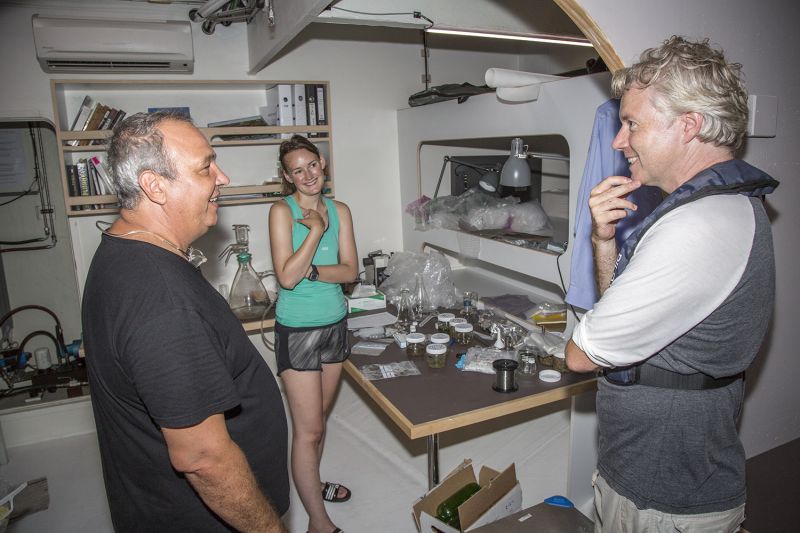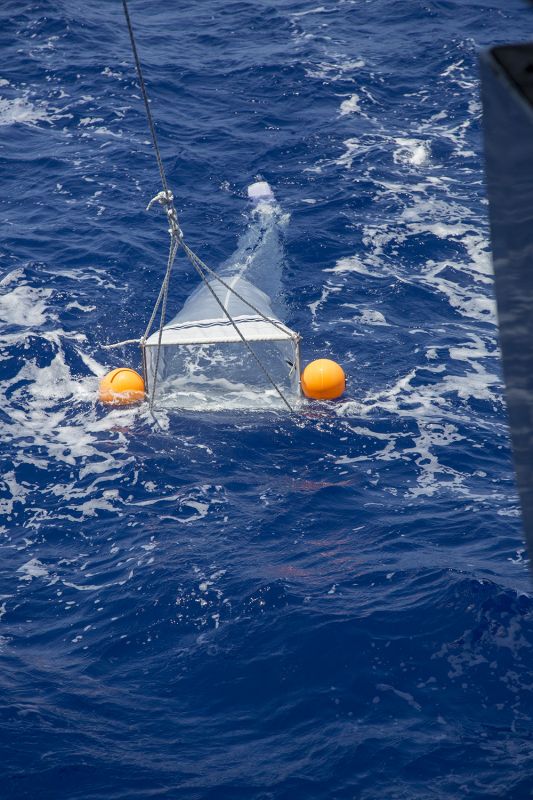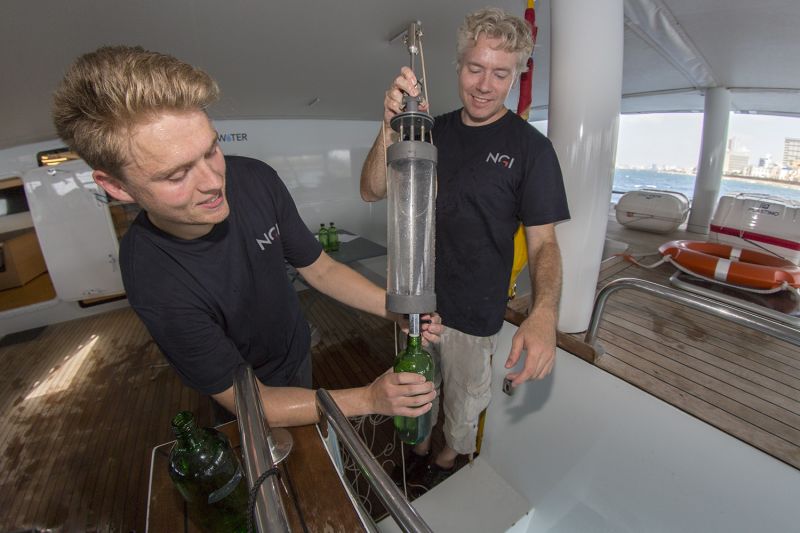WEATHER-MIC microplastic sampling campaign in Cuba
Published on by Kim van Arkel, Scientific Advisor in Science
Last day on board the Race for Water platform for our norwegian team of NGI to complete their WEATHER-MIC micro plastic sampling campaign in Cuba !

The norwegian team and the crew on the top of the Race for Water Ambassador Vessel in Cuba © Peter Charaf / Race for Water
This WEATHER-MIC campaign in Cuba is lead by Hans Peter Heinrich Arp, Senior specialist principal engineer at the Norwegian Geotechnical Institute (NGI) and one of the main coordinator of the JPI Oceans - WEATHER-MIC project. He is accompanied by Linn Merethe Brekke Olsen, who has been working with him on microplastic research for over a year. In addition, a new Masters student, Øyvind Lilleeng is also with them to analyse the samples collected in Cuba as part of his Master’s thesis.
This micro plastic sampling campaign is a first one in Cuba ! Surprising us the cuban population is not all aware about the micro plastic pollution issue.
A beautiful collaboration has taken place between Prof. Carlos Alonso-Hernadez from the CEAC (Centro de Estudios Ambientales de Cienfuegos) and Hans Peter from NGI supported by the Race for Water platform. Carlos gave his precious support to obtain all the necessary permits and he was invited to come on board of the Race for Water with other marine researchers of the CEAC to be part of this microplastics sampling campaign. Thus the samples will be split and analysed both in Cuba (with CEAC) and in Norway (with NGI and other WEATHER-MIC project partners) which will lead to a joint publication!

Left to right: Professor Carlos Alonso-Hernandez (CEAC), Linn Merethe Brekke Olsen (NGI) and Dc. Hans Peter Heinrich Arp (NGI). © Peter Charaf / Race for Water
The navigation was composed of long days sailing alternating water, sediment and plankton samples close the Havana coast and outward. These first samples reveals a high micro plastic concentration in Havana Bay and outward but maybe less concentrated that in the Sargasso sea.


The Manta net in use / Øyvind Lilleeng and Hans Peter H. Arp collecting water samples in Cuba. © Peter Charaf / Race for Water
For more information on this WEATHER-MIC mission in Cuba, please have a look to Hans Peter Arp testimony on our Race for Water Odyssey blog at: http://odyssey.raceforwater.org/operation-weather-mic-a-cuba/?lang=en.
Media
Taxonomy
- Research Institute
- Water
- Education & Research
- Water Pollution
- Oceanographic Survey
- Polymers & Plastics
- Education
- plastic pollution
- plastic debris
- microplastics
1 Comment
-
Hi Race for Water! Just wondering what methodology was used to assess awareness of micro-plastic pollution issues. It would be good to measure public awareness here in Bermuda too. Thanks.
1 Comment reply
-
Hi Vanese, thank you for your interest in our Cuban stopover. We didn't use a specific methodology to assess awareness of micro-plastic pollution issues in Cuba, but during the workshop 'Plastic Waste to Energy' our Race for Water team was surprised that some cuban participants of the workshop was not aware about the micro-plastic pollution. However, Lic. Arianna Garcia Chamero of the CEAC (Centro de Estudios Ambientales de Cienfuegos) presented some first results on micro-plastic pollution in the cuban marine ecosystems which are not already published yet. It seems that there was small interest for this issue in Cuba for now but our Race for Water Odyssey stopover there have clearly lead to raise awareness on this issue. Besides Lic Arianna and other cuban scientists have exchanged on this plastic pollution topic with Hans Peter and his NGI team during the Weather-Mic sampling campaign. Their further results will contribute to our understanding of this plastic pollution in Cuba.
-